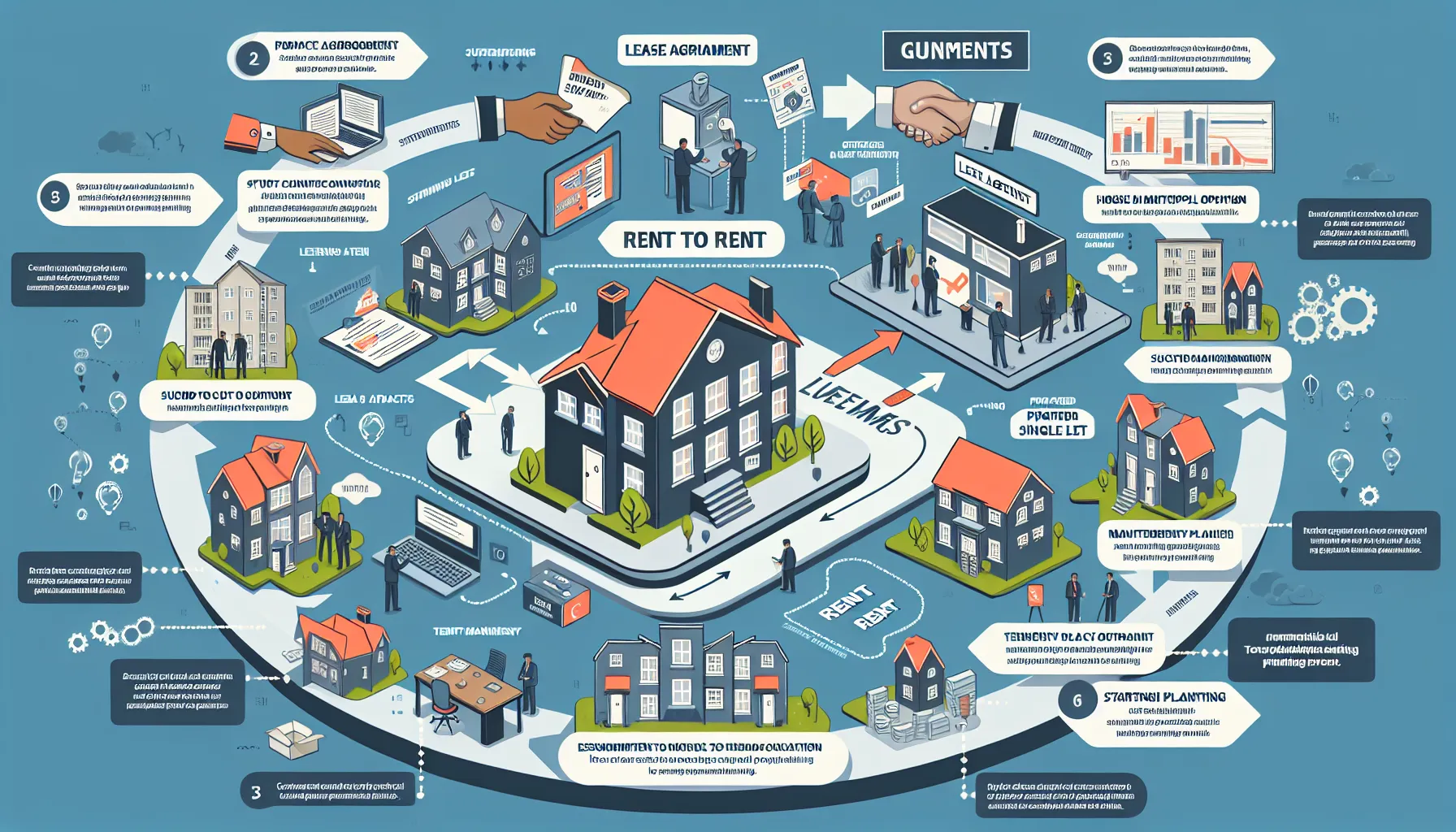Rent to rent property offers a unique opportunity for entrepreneurs to generate income from properties without the need to own them. This method allows you to control properties, sublet them, and profit from the difference between rental income and expenses. Let’s dive into the details of how rent to rent works, its benefits, and how you can get started.

What is Rent to Rent?
Rent to rent is a straightforward concept. You lease a property from a landlord for a fixed period and then sublet it to individual tenants. Your profit comes from the difference between the rent you pay to the landlord and the rent you collect from your tenants. This model can be applied to various types of properties, including Houses of Multiple Occupation (HMOs), serviced accommodations, and single lets.
How Does Rent to Rent Work?
- Lease Agreement: You sign a lease agreement with the property owner, agreeing to pay a fixed rent for a specified period.
- Subletting: You sublet the property to tenants at a higher rent than what you pay the owner.
- Profit: The difference between your rental income and the costs (rent to the owner, utilities, maintenance) is your profit.
Types of Rent to Rent Models
Rent to Rent HMOs
A House of Multiple Occupation (HMO) is one of the most popular forms of rent to rent. In an HMO, you rent out individual rooms to tenants, each with their own tenancy agreement. This model maximizes rental income and minimizes vacancy rates.
Example Cost Breakdown for HMOs
| Expense | Amount (£) |
|---|---|
| Rent to Owner | 1,000 |
| Utility Bills | 500 |
| Total Costs | 1,500 |
| Rent from Tenants | 3,000 |
| Profit | 1,500 |
Rent to Rent Serviced Accommodation
Serviced accommodation involves renting out the entire property on a short-term basis, similar to a hotel. This can generate higher income per night but comes with increased costs and management efforts.
Pros and Cons
Pros:
– Higher rental income per night
– Flexible rental terms
Cons:
– Higher operational costs (cleaning, laundry, booking fees)
– Increased management effort
Rent to Rent Single Lets
Single lets involve renting a property to a single household, such as a family or a couple. This model is simpler to manage but typically generates less profit compared to HMOs and serviced accommodation.
Is Rent to Rent Legal?
Many people wonder if rent to rent is legal. The answer is yes, as long as it’s done with the full knowledge and consent of the property owner and the correct contracts are in place. Rent to rent is recognized by the UK government’s Property Ombudsman and the Property Redress Scheme (PRS).
Property Redress Scheme Definition
Rent to Rent is where an individual or company, known as the agent, rents a property from a landlord for a specified period during which the landlord receives a fixed guaranteed rent from the agent. The agent then lets the property, generally on a room-by-room basis and manages the property.
Getting Started with Rent to Rent
Starting a rent to rent business requires careful planning and a clear understanding of the legal and financial aspects. Here’s a step-by-step guide to help you get started:
1. Research and Education
- Understand the Market: Research the rental market in your area to identify the demand for different types of rental properties.
- Learn the Legal Requirements: Ensure you understand the legal aspects, including tenancy laws, landlord obligations, and health and safety regulations.
2. Developing a Business Plan
- Set Clear Goals: Define your business objectives and financial targets.
- Identify Potential Properties: Look for properties that are suitable for rent to rent, such as those needing minor refurbishments or underperforming HMOs.
3. Securing Funding
- Initial Investment: While rent to rent requires less upfront capital than purchasing property, you will still need funds for deposits, refurbishments, and initial operational costs.
- Financial Planning: Create a detailed financial plan outlining your expected income, expenses, and profit margins.
4. Legal Contracts
- Lease Agreements: Draft clear and legally binding lease agreements with property owners.
- Tenancy Agreements: Ensure you have proper tenancy agreements in place for your subtenants.
5. Property Management
- Maintenance and Repairs: Set up systems for regular maintenance and prompt repairs.
- Tenant Management: Implement effective tenant screening and management processes to ensure a smooth operation.
The Role of AnySqft in Rent to Rent
AnySqft’s AI-driven platform can significantly streamline the rent to rent process. From finding ideal properties and tenants to managing maintenance and repairs, AnySqft provides comprehensive support to ensure your rent to rent business runs smoothly.
Conclusion
Rent to rent property is a viable and profitable business model that offers a unique way to generate income from real estate without the need for ownership. By understanding the different rent to rent models, ensuring legal compliance, and utilizing tools like AnySqft, you can build a successful rent to rent business. Whether you’re new to real estate or looking to expand your portfolio, rent to rent offers an exciting opportunity to achieve financial freedom.
Summary
In summary, rent to rent property involves leasing properties from owners and subletting them to tenants. This guide covered the basics of rent to rent, the different models, legal aspects, and how to get started. With the right approach and tools, rent to rent can be a highly profitable business model, offering consistent cash flow and financial independence.
